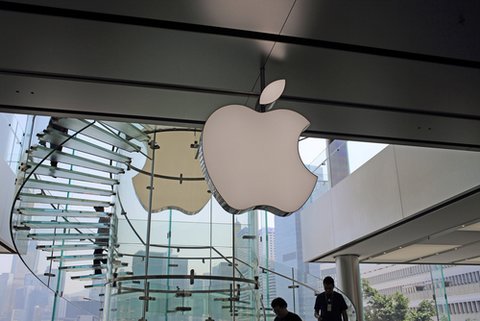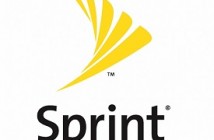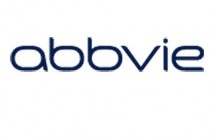According to MasterCard (NYSE:MA), the world is slowly but surely shifting to mobile payment methods in lieu of credit cards, however not completely. The release of Apple (NASDAQ:AAPL) Pay last week is a sure reflection of this very fact.
Last week, when Apple (NASDAQ:AAPL) Pay was released to the general public, it was indicative of a changing global acceptability for mobile payments. Apple (NASDAQ:AAPL) Inc. is known for being innovative and creative, staying ahead of the curve, and setting trends. This time, it’s a new mobile payment system called Apple (NASDAQ:AAPL) Pay, and Apple (NASDAQ:AAPL) is sure it will be a huge success. iPhone users are loyal to the brand as well, and with Apple (NASDAQ:AAPL) Pay as a new feature on the iPhone 6, millions of iPhone users and bound to start using it as a preferred mode of payment.
However, MasterCard (NYSE:MA) asserts that widespread adoptability of the Apple (NASDAQ:AAPL) Pay system is still a long shot. According to MasterCard (NYSE:MA)’s Mobile Readiness Index, the world does not consider mobile payment systems to be “normal” as yet. “Normal” on the index is a score within the range of 60 to 100.
The Mobile Readiness Index, which MasterCard (NYSE:MA) uses as a tool to assess the consumer market, takes into account the following factors: consumer readiness, mobile commerce clusters (links between mobile networks and banking channels), environment, regulation, infrastructure, and the financial services available. The Index assess whether consumers in a particular country are ready for mobile payment systems. A score of 100 on the index would mean complete acceptability, such that mobile payment systems completely replace credit cards, a scenario deemed “unlikely” by MasterCard (NYSE:MA).
MasterCard (NYSE:MA) recently released a version of the Mobile Readiness Index, showing proper statistics on the demand for mobile payment systems in various countries.
At the top of the table is Singapore, with a score of 45.6. Singapore has a highly regulated telecommunications market, and all the population is on a mobile network. Both these factors, together with Singapore’s excellent legal system and proper links between banks and mobile networks, put Singapore’s population in a place where adopting mobile payment systems, such as Apple (NASDAQ:AAPL) Pay, is not a big risk.
The U.S. ranks third on the index, with a score of 41.5. The reason why U.S. ranks third is because of the high spending patterns that infest the local populace. Introducing a mobile payment system in the U.S. will receive positive results, just like Apple (NASDAQ:AAPL) Pay has, because consumers are more open to spending. Hence, the U.S. scores heavily in the “environment” factor of the Index.
However, it is not necessary that all developed nations will be open to the idea of mobile payment systems like Apple (NASDAQ:AAPL) Pay. For example, in Italy, the cost of banking is so high that it becomes unfeasible for consumers to pay using mobile payment systems. Also, in Kenya, ranked fourth on the index, acceptability of Apple (NASDAQ:AAPL) Pay would be great, because over 89% of the population is familiar with the concept of mobile payment systems.





Pingback: Apple Pay Rival MCX Hit by Data Breach – Tom’s Guide | Amazing News
Pingback: CurrentC won’t let email hack delay launch as it explores NFC – Macworld | Amazing News
Pingback: Apple Pay to Fuel Chatter, New Products at Money 20/20 – Bloomberg | Amazing News
Pingback: Retail skirmish blocks Apple Pay at checkout lane – Fort Wayne Journal Gazette | Amazing News
Pingback: Top iOS news of the week: Apple Pay kicked out, too late it’s already big – ZDNet | Amazing News
Pingback: Buy cheap viagra online
Pingback: cialis 20 mg price
Pingback: cheap cialis
Pingback: online pharmacy viagra
Pingback: non prescription erection pills
Pingback: male ed pills
Pingback: erection pills
Pingback: rx pharmacy
Pingback: online pharmacy
Pingback: rx pharmacy
Pingback: Get cialis
Pingback: Buy cheap cialis
Pingback: vardenafil canada
Pingback: levitra
Pingback: levitra cost
Pingback: new cialis
Pingback: casino online UK
Pingback: ปัง ปัง สล็อต
Pingback: colt firearms
Pingback: ufazeed
Pingback: nutrition products
Pingback: 789bet
Pingback: rondreis gambia senegal
Pingback: lucabet
Pingback: ลัคกี้วีไอพี77
Pingback: คลินิกเสริมความงาม
Pingback: 꽁돈 토토 사이트
Pingback: วิธีการดู ราคาบอล 0.75
Pingback: Freshbet
Pingback: Yakuza Honor
Pingback: pg168
Pingback: pinco yukle
Pingback: Avaitor
Pingback: debelov
Pingback: Gates of Olympus
Pingback: av ซับไทย
Pingback: Ethical Elephant Sanctuary
Pingback: Villa for sale in phuket
Pingback: สล็อตเกาหลี
Pingback: บุหรี่ไฟฟ้าส่งด่วน
Pingback: รับปริ้น 3d
Pingback: ชื่อมงคล